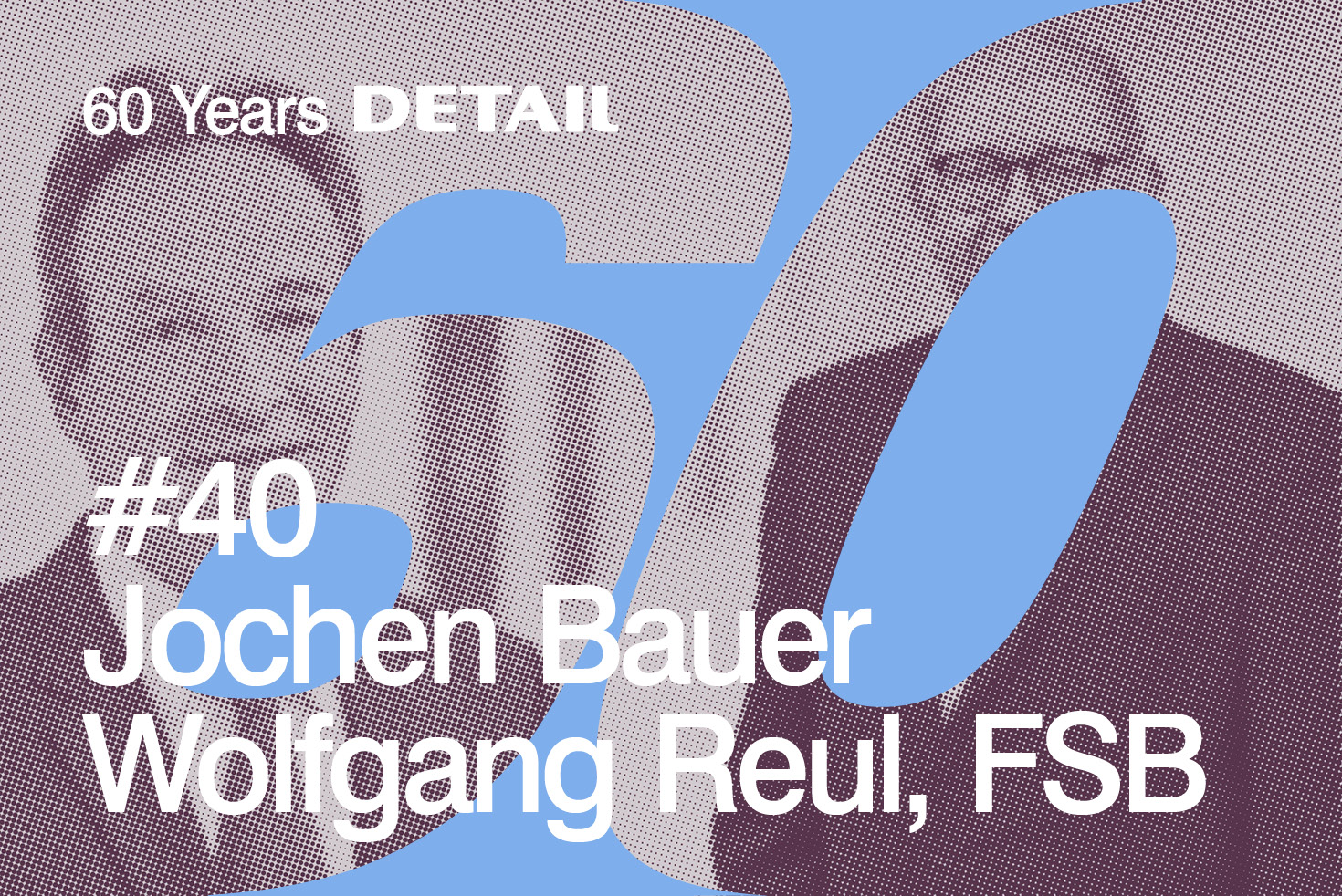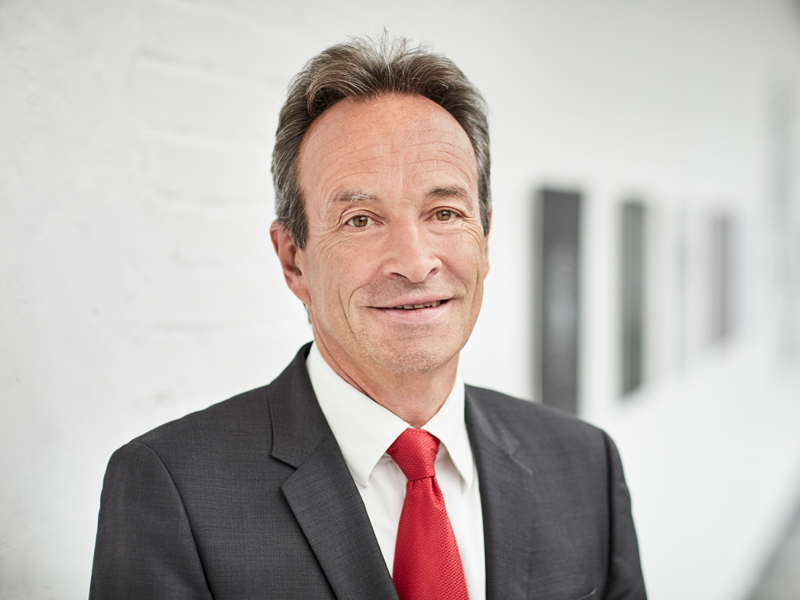60 Years of Architecture: Retrospective and Outlook With FSB

“How do you rate the legacy of the 1960s, and where will architecture be in 60 years?” Jochen Bauer and Wolfgang Reul share their thoughts in a special greeting on the occasion of Detail’s anniversary.
What is the legacy of the 1960s with respect to architecture?
JB: The legacy of the 1960s can be clearly seen with a look at the old capital, Bonn, and the federal capital, Berlin. First of all, there are two true icons of the post-war era, namely Sep Ruf’s Kanzlerbungalow in Bonn with its transparent, democratic structure, and Mies van der Rohe’s New National Gallery in Berlin, which has been refurbished by David Chipperfield Architects over the past few years and recently celebrated its reopening. FSB is represented in this area now, for instance with reproductions of original door handles, with bespoke solutions developed with the architects and with contemporary models.
WR: The great achievements of the 1960s also include buildings by Egon Eiermann, for example the old parliament building in Bonn: familiarly known as Langer Eugen (Tall Eugene) and now part of the city’s UN campus. Further, there is the rebuilt Kaiser Wilhelm Memorial Church in Berlin. By the way, Eiermann usually chose wedge-shaped door handles for his buildings; these are now in our program as the FSB 1005 design. During that decade, Berlin also saw the creation of the Philharmonie by Hans Scharoun, in direct proximity to the New National Gallery, and in the eastern part of the city the Haus des Lehrers (House of the Teacher) arose, as did the TV tower on Alexanderplatz. Moreover, it is worth mentioning the concrete shell structures by Ulrich Müther, the Teepott in Rostock-Warnemünde and the Hyparschale in Magdeburg. And we must not forget the Mariendom church in Velbert-Neviges, which was designed by Gottfried Böhm, or the Robin Hood Gardens in London, the work of architects Alison and Peter Smithson, which succumbed to demolition a short time ago. Last but not least, there is Oscar Niemeyer’s National Congress building in Brasilia.
When did you first encounter Detail?
WR: I can’t exactly remember, but it must have been in the mid-90s, when I was switching from sales to architectural consultation at FSB. Completely clueless, I would spend my weekends studying the most prominent architecture magazines of the time in order to learn a bit about the mother of all arts. They were all available to me at FSB. And Detail always lay right on top! That is how I became acquainted with the architects who were building the new capital. At that time, we developed our “door handles for Berlin” with a few of them. I still have fond memories of my first visits with our then managing director, Jochen W. Braun, to Hans Kollhoff, Kleihues and others.
Where will architecture be 60 years from now?
WR: It’s hard to say, particularly in the time of a pandemic that has already triggered so many changes. In 60 years, it will no longer be necessary to mention sustainability, for that will have become standard. Ecological materials (wood, secondary aluminum etc.) and co-housing will also have prevailed. In the metropolises, we will be forced to build ever taller. High-rises, but religious buildings as well, will be multifunctional, and our streetscapes will have undergone significant transformation due to changes in mobility.
JB: Over the coming years, architecture will undergo further development. New forms of design, as well as new spatial concepts and materials, will increasingly take centre stage. Architecture and design have always led to products and design principles that have lost none of their former currency and are therefore justifiably described as classics. Today, concepts and designs from 60 years ago are just as convincing as the new approaches. This applies even to door handles, which we at FSB understand as “architecture in miniature”. For instance, we are now concentrating on reissued classics, or designs inspired by past classics, in a communications campaign: reconceived classics. This dynamic between old and new will recur in 60 years and designs being created today will then count among the classics.
Jochen Bauer After many years of employment with Berliner Glas GmbH (1988-1998), the Euroglas Group (1999-2008) and Schwinn Beschläge GmbH (2011-2016), Jochen Bauer joined Franz Schneider Brakel GmbH as managing director. Since 2021, Tobias Gockeln has supported him in this capacity at the company.
Wolfgang Reul Since the mid-1990s, Wolfgang Reul has been working for FSB in German-wide distribution work with a focus on sales and marketing for architects; he is also a devoted fan of door handles and architecture. He is currently in charge of architectural consultation at the venerable company in Brakel.


